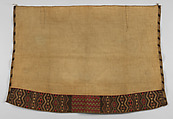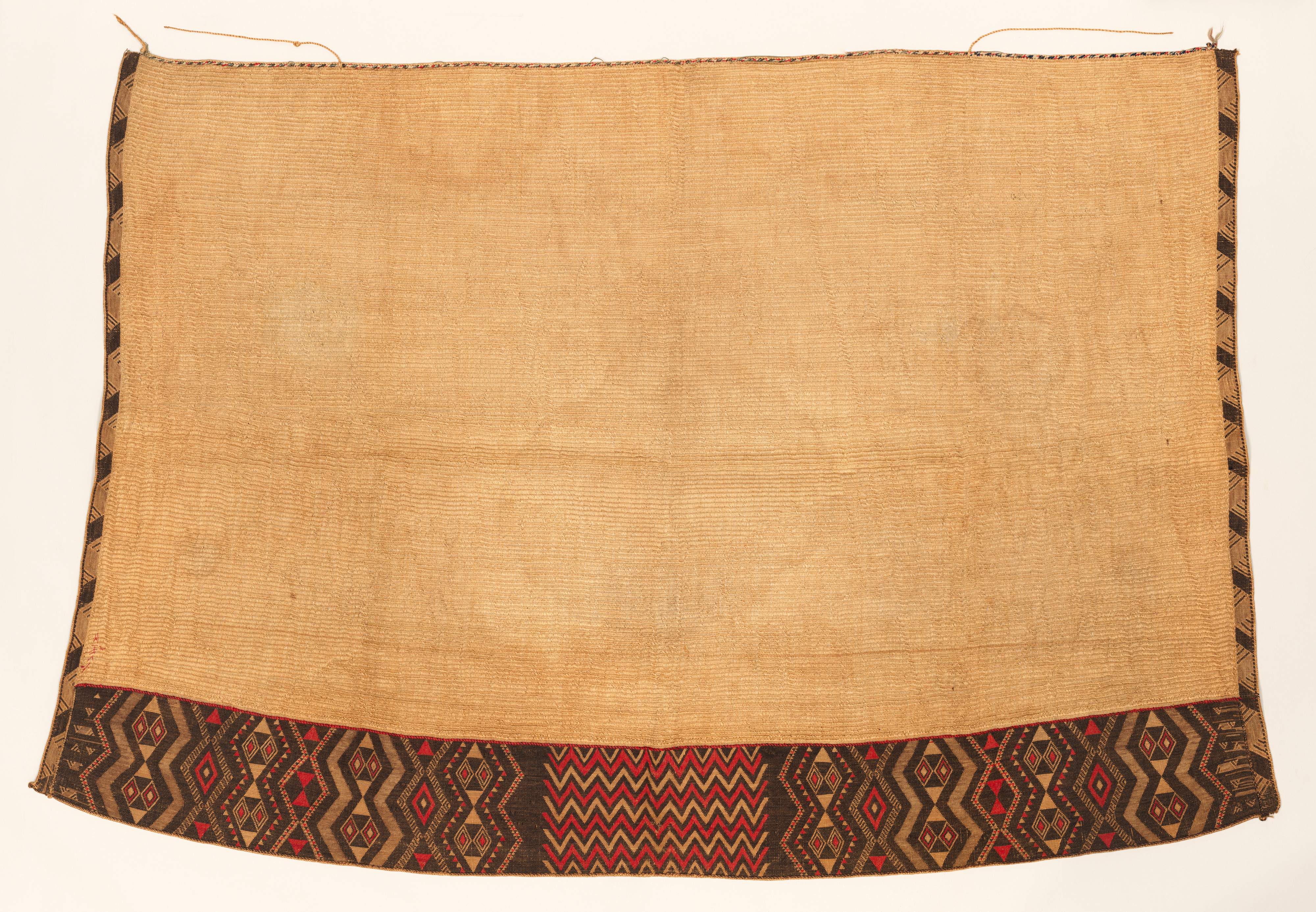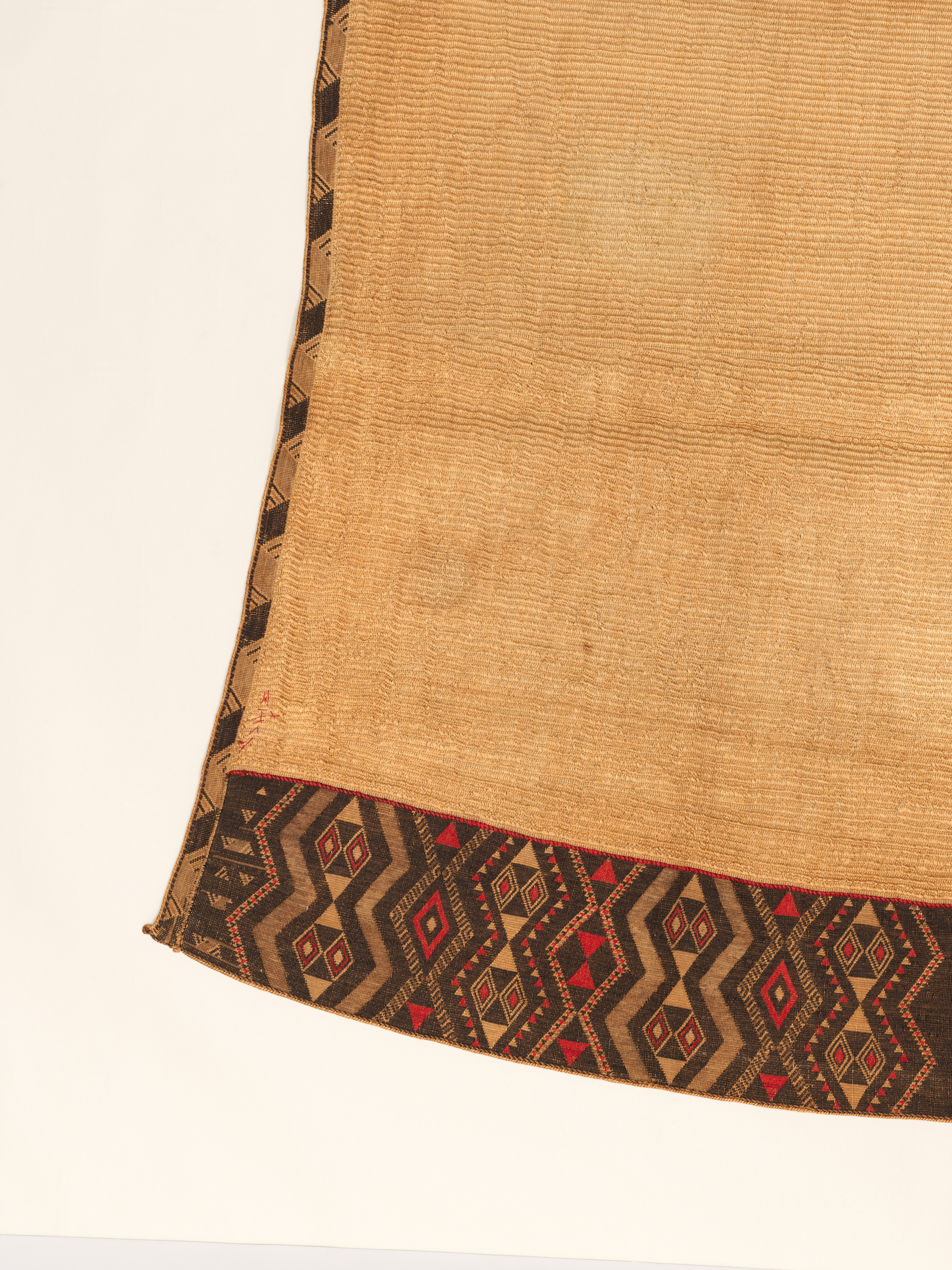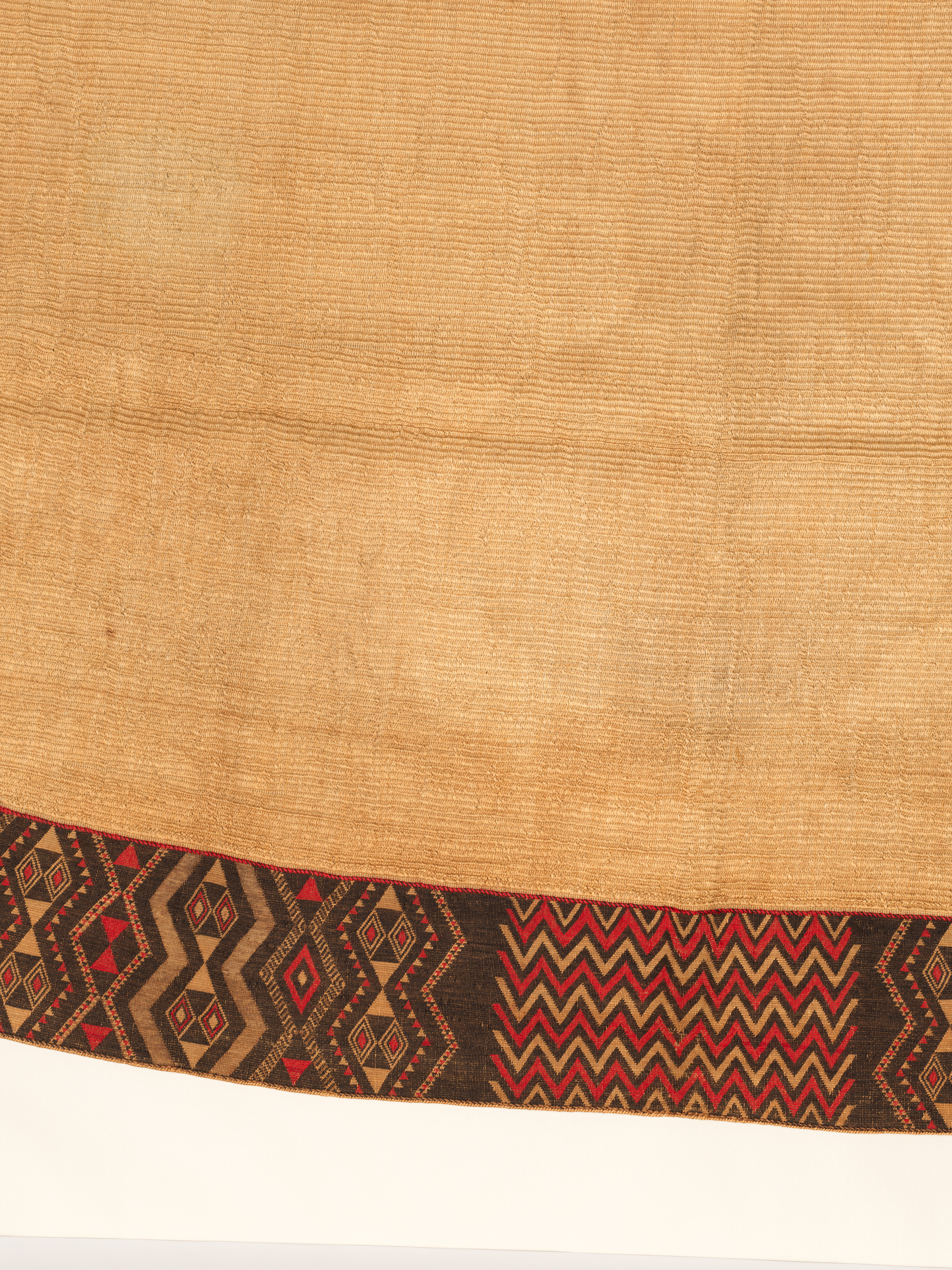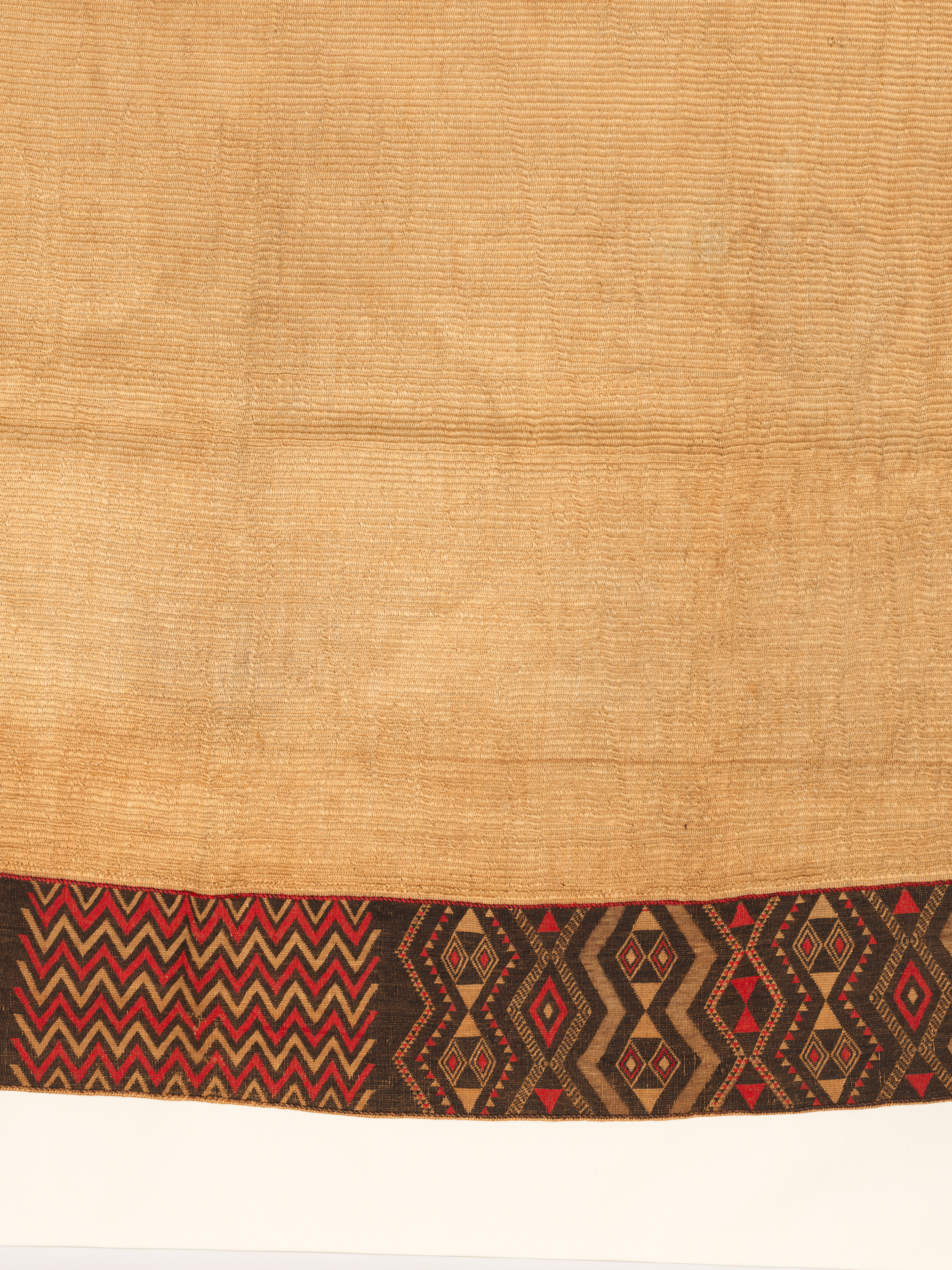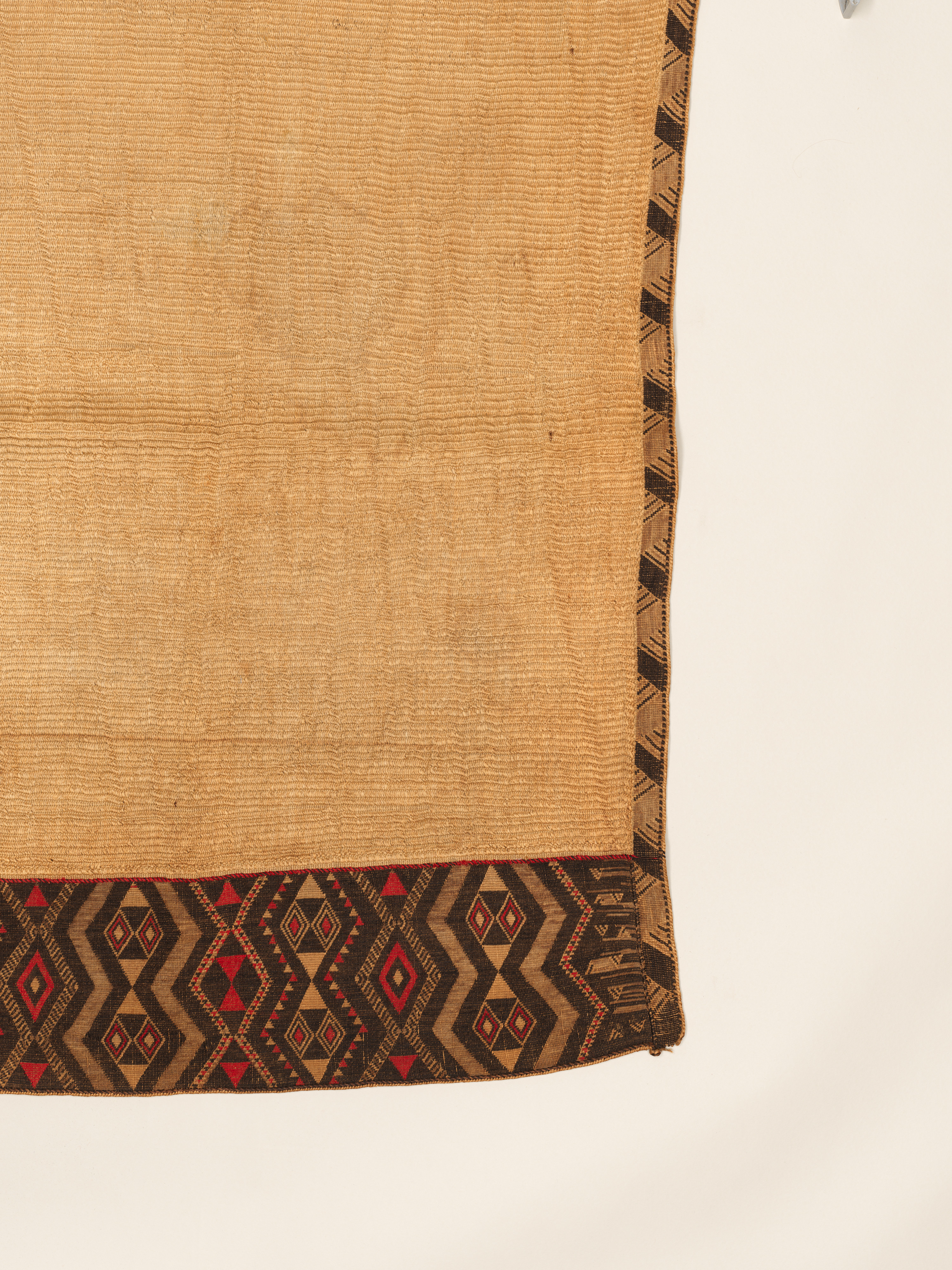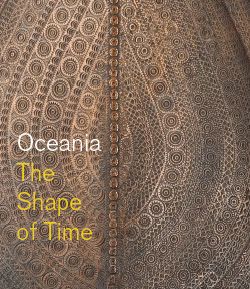Cloak (Kaitaka aronui)
Not on view
This magnificent Maori cloak from New Zealand is a singular example of the genre known as kaitaka aronui and features wefts which run in a horizontal direction when worn. The main body of the cloak is broadly rectangular, flaring out gently to each side at the bottom. Soft and supple to the touch, a series of extra seams are ingeniously woven into the main body (kaupapa) of the cloak creating darts that enable the cloak to rest comfortably on the shoulders when worn. The lower border of the cloak is decorated with a wide woven tāniko border. This distinctly Maori technique of finger-twining used traditionally dyed fibers highlighted with touches of brightly colored wool yarns, and was an innovation born out of early interaction with Europeans. This example is no exception and features a set of characteristic designs—triangles, chevrons and zig-zags—in natural with black, brown and red highlights, arranged symmetrically to produce a lively, dynamic aesthetic.
Cloaks of this caliber are rare and this example is in exceptional condition given its age. The kaitaka form as a genre attained particular eminence in New Zealand during the first quarter of the 19th century. A special type of flax (Phormium tenax) was cultivated to produce the fine silken fiber (muka) that creates the lustrous sheen of these extremely prestigious cloaks, which were worn by high-ranking Maori men and chiefly women. The fibers were prepared carefully with no recourse to the usual soaking and beating in preparation since these processes reduced the silken sheen of the final garment. The unadorned surface of the cloak also called for expert execution of the double-pair twining technique (whato aho rua) which produced its supple, silken quality.
The knowledge embedded in the weaving arts belongs to Te Whare Pora (The House of Weaving), which is associated with Hine-te-iwa-iwa, the spiritual entity who presides over the art form. According to Maori, Hine-te-iwaiwa is the daughter of the great Tane-nui-a-rangi, the deity associated with the forests and birds, and Hine-rauamoa, who is variously described as the female element Tane searched for to create mankind, and as the youngest and most fragile child of light who was taken by Tane to illuminate the world of darkness. Important protocols were, and continue to be, strictly adhered to at each stage in the cultivation, harvesting and preparation of flax fibers for the weaving of fine cloaks. These protocols are in keeping with strict guidelines established to ensure the spiritual safety of the weaver as the art form is deemed to be a sacred (tapu) activity overseen by Hine-te-iwaiwa who is also the personification of childbirth and the cycles of the moon. The close genealogical relationship of Hine-te-iwaiwa with the primordial gods of Ranginui (Sky) and Papatuanuku (Earth) accounts for the high esteem in which the art form is held and the status of the women who were chosen to learn the art. Weavers continue to be held in high esteem and the art of weaving (raranga) continues as one of the most dynamic and innovative Maori art forms to this day.
Maia Nuku, 2020
Evelyn A. J. Hall and John A. Friede Associate Curator for Oceanic Art
Further reading
Tamarapa, Awhina (ed). Whatu Kākahu, Māori Cloaks. Wellington: Te Papa Press.
Pendergrast, Mick. “The Fiber Arts,” in D. Starzecka, Maori Art and Culture. London: British Museum Press, 1996. pp. 114–46.
Best, Elsdon. “The Art of the Whare Pora.” Transactions and Proceedings of the New Zealand Institute, 31 (1898): pp. 625–58.
Due to rights restrictions, this image cannot be enlarged, viewed at full screen, or downloaded.
This artwork is meant to be viewed from right to left. Scroll left to view more.
